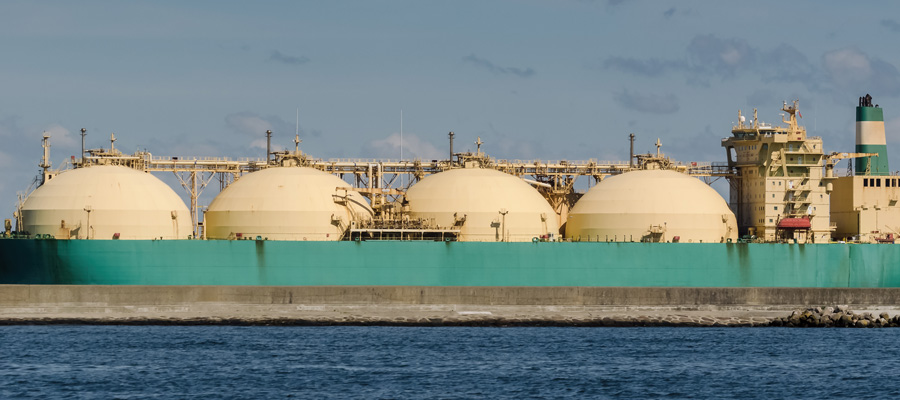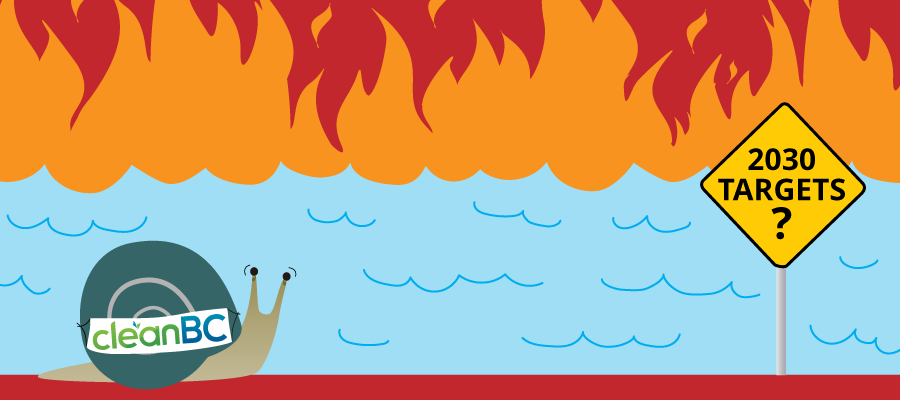BC government’s spin cycle on LNG
Last year, we made freedom of information requests to the BC government about two CCPA-BC studies: A Clear Look at LNG by David Hughes (released May 26) and LNG and Employment in BC by myself (released July 28). Both reports poke holes in extravagant claims being made by the BC government about natural gas supplies, environmental impacts, and economic benefits of developing LNG.
It took several months for us to get a response, a total of 126 pages, although many of those pages are repeats (when an email gets replied to and all the same back-correspondence is attached). Interestingly, the conversations among civil servants are more nuanced, and closer to our own findings. The disconnect happens mainly at the political level, where the government is clearly disinterested in the findings of our research, and instead focused entirely on figuring out a message back to the public. Spin over substance.
Part 1: Natural gas supplies
In the case of David Hughes, the media took the most interest in his finding that BC’s natural gas supplies were not nearly as large as the BC government was publicly and repeatedly stating. In his report (p. 20) he quotes the government stating “BC’s natural gas supply is estimated at over 2,933 trillion cubic feet” and this represents “150 years of natural gas supply.”
Hughes argued this was “a false and irresponsible statement, considering the data from the province’s own BC Oil and Gas Commission” (OGC). According to the OGC, “proven reserves” (tested by drill bit) were only 42.3 trillion cubic feet (tcf) in 2013, while “marketable resources” (estimates based on modelling) were 416 tcf (1).
The FOI revealed to us that even before we published Hughes’ report, he was on the BC government’s radar, thanks to a public talk he gave in Smithers a month earlier. A Smithers reporter asked the government for a response to Hughes’ critique of the government’s claims, and in that response the government acknowledged that most of the 2,933 tcf would NOT be recoverable.
The government then stated they “believe a 30 percent success rate is very achievable over the long term.” This is just a guess, whereas David notes that typically only 10-15% of the total gas in place in shale/tight gas plays gets recovered. Nonetheless, the civil service comes up with a number, “870 tcf of marketable supply” that is much larger than the OGC estimates, but which shows Hughes’ analysis is closer to the mark.
When Hughes’ report was released in May 2015, the government almost immediately issued an oped in the name of Natural Gas Minister Rich Coleman. The oped, “BC’s natural gas supports long term prosperity”, misrepresents Hughes’ report (attributing to Hughes only the proven reserves number), while stating 800 tcf as a “conservative estimate” of recoverable gas. The oped neglects to apologize for making the much higher 2,933 tcf public claim in the first place.
The real punchline, however, comes a couple months after the release, with a Natural Gas ministry analyst noting: “It is an ongoing saga over here with communications and the use of proper terminology.” This quote was in response to an email exchange with the Oil and Gas Commission, where the OGC states “If I may suggest, perhaps its time for the Ministry to use the correct language. The estimated Original Gas in Place is ~2900 tcf … The actual reserves are published in our report. The probable amount of recoverable gas we know about today (Montney and Horn) is ~500 tcf.”
All of which is consistent with Hughes’ original analysis, and his rebuttal to the Minister’s oped. This internal exchange, however, led to a Briefing Note produced for the Natural Gas ministry, which states “other branches of government have misused terms or values such as ‘reserves’, ‘resources’ or ‘marketable’ in describing BC’s oil and gas endowment”. It sets the record straight with a three page overview, called “British Columbia’s Oil and Gas Reserves and Resources: A Quick Reference.”
This piece re-affirms what David Hughes has been saying all along, so we are happy that we made a contribution to set the government straight. Or did we? The BC Government natural gas website still, to this day, states “British Columbia has more than an estimated 2,900 trillion cubic feet of marketable shale gas reserves.”
Part 2: Employment
The second part of the FOI is based on my report critiquing the claim that BC stands to gain 100,000 permanent jobs from LNG. I looked at regulatory filings from LNG proponents, and their own corporate estimates of temporary construction jobs and permanent operating jobs, and considered some of the potential upstream jobs gains. I found that the 100,000 number came from a consultant’s report by Grant Thornton, which the government commissioned a few weeks before the 2013 pre-election Throne Speech, and then used during the election campaign and after. I review the methodology of the GT report and found exaggerations at every turn to come up with inflated numbers.
The results of the FOI show a confused bureaucracy at best. Upfront they state “The CCPA cites the wrong report – it was KPMG not Grant Thornton that provides the 100k jobs; both are public.” Alas, the KPMG report is not public, and I could find no trace of it despite intensive search. The FOI then reveals the KPMG report is from April 2014, almost a year after the election. That response makes no sense whatsoever – the issue at hand is that the BC government manufactured a massive jobs number for its own 2013 electoral purposes, and used public money to do it.
The tone of the email is mostly concerned with “putting together some messaging in response to the CCPA’s position on the numbers.” But when they actually state employment numbers, they are close to what I stated in the report. For example, the FOI exchange behind the scenes also includes a comment from Pacific NorthWest LNG (the Petronas-led project) that “in fact, 330 long-term operational careers will be created at the facility”.
This led to another Rich Coleman oped, “CCPA report misguided, poorly researched”, claiming my report was “based on outdated and flawed information.” But true to form, this claim is not proven. The oped cites a few thousand peak (temporary) construction jobs and operating jobs – with numbers similar to those I stated in the report – and which again don’t get anywhere close to 100,000. It only does some hand-waving about “spin-off jobs.” In fact, I discuss potential spin-offs in my paper, and found massive exaggeration by the BC government.
The oped hangs its claims on the credibility of Grant Thornton (and KPMG), citing them as independent analysis. But we know from the Grant Thornton report that the government provided both the data and the economic model to the consultant, and worked hand-in-glove with them over a tight few weeks to produce the numbers in time for the 2013 Throne Speech. This is precisely the problem with government’s use of consultants to give their pet projects the appearance of independent validation.
All in all, the FOI process shows the BC government’s spin machine at work. Their response to our reports is to come up with messages that mis-represent our findings, while ignoring any responsibility for their outrageous claims, even as the bureaucracy shows those claims to be false.
Note 1. 376 tcf published by the NEB and OGC in 2013 plus 40 tcf added by Hughes to cover the Liard and Cordova plays that were not included in the NEB/OGC report.
Topics: Climate change & energy policy, Employment & labour, Environment, resources & sustainability, Features, Fracking & LNG






